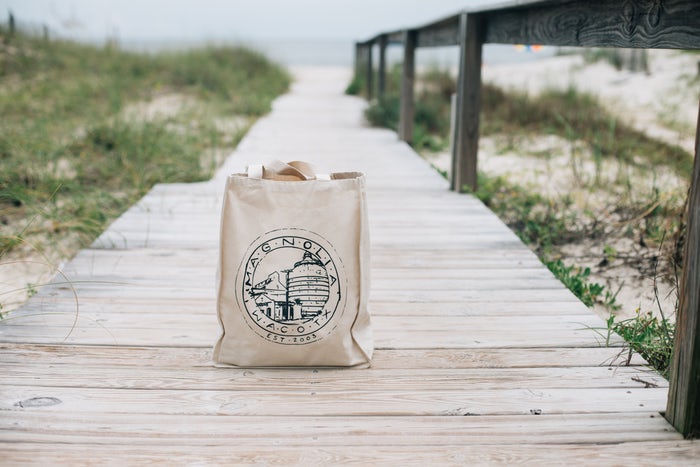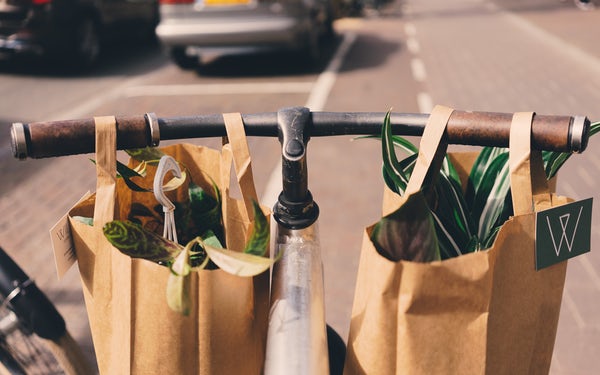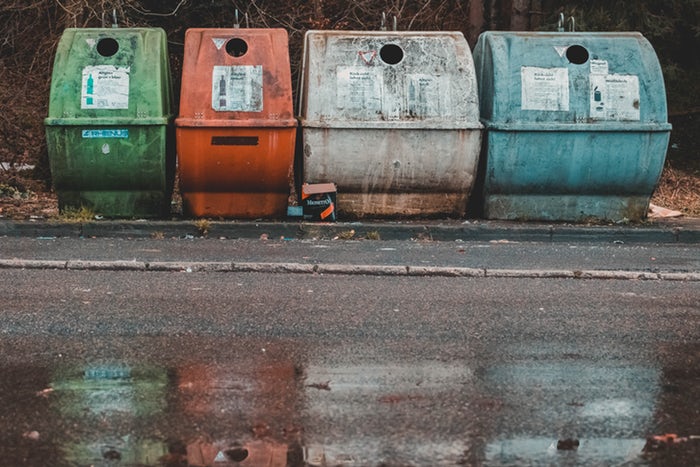Our throwaway consumer culture has created a lot of problems for the world at large by increasing our waste exponentially. Now our landfills are at breaking point, there’s a 600,000 square mile garbage patch in the Pacific Ocean, and even burning the trash to create fuel is causing massive pollution problems.
I’d like to blame it on big business creating products that will break within a short time frame to increase their profit margins and failing to take precautions for their own waste or our elected officials for failing to pass adequate laws against these environmental disasters, but honestly we consumers are also to blame. We do things like:
- Buying what we don’t need.
- Throwing things away rather than repairing them.
- Disposing of recyclable items in trash/general waste bins.
- Failing to separate/clean our recycling, which means it can’t be recycled and contaminates the rest of the truck.
Of course, companies should do their part to cut waste in all sections of their business and we should hold them to account, but it’s also important to focus on what we as individuals can do. We’d like to go a little bit further and show you some practical measures that you can take to go zero waste.
22 things you can do to make your home zero waste
Refuse
This is the first step on your journey to a zero-waste home and it starts in the shop (or on the website if you prefer). The vast majority of us have more than enough stuff, whether it’s clothes, gadgets, or even stationery… that might just be a writer thing that I’m projecting onto the rest of you.
This means that we don’t have to buy new stuff all the time. You don’t need a new phone just because Apple has added a new headphone dock, and you can probably wear a dress that’s already in your wardrobe to the next wedding you attend. We have to break the culture somewhere.
And that doesn’t even begin to cover the huge amounts of packaging that comes with nearly everything you buy – even on items that really don’t need it like fresh fruit and veggies at your local supermarket.
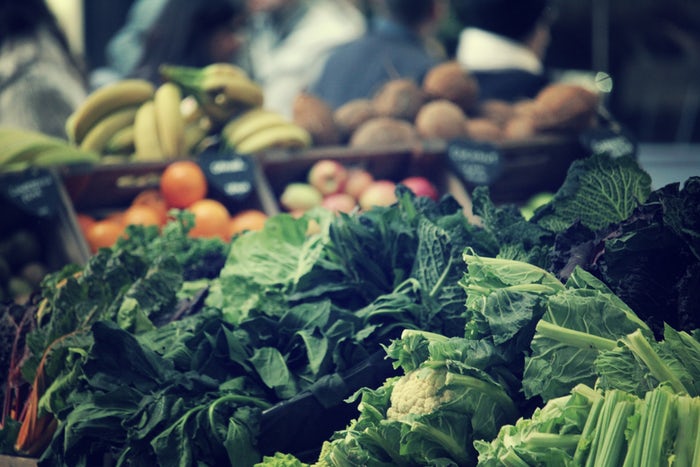
Okay, now it’s time for me to share my top tips for cutting your waste through refusing things you don’t need.
1. Get a reusable water bottle
This will stop you from buying bottled water all the time and save you lots of $$$ in the process.
2. Get a reusable coffee cup
It’s incredibly hard to recycle disposable coffee cups, so don’t use them. Take your own and ask the barista to fill it. Some places even give you a discount!
3. Make it yourself
If you bake your own bread or mix your own body scrub, then you can cut out packaging altogether or reuse old jars. Plus, you can brag on your social media platform of choice with the hashtag #handmade.
4. Ask your retailer for less packaging
When buying something online (especially if it’s second-hand), let the retailer know that you’d like less packaging for your product or them to only use packaging that is recyclable. You’d be surprised how amenable people are.
5. Rent where possible
If you’re only going to use the item for a short time, considering renting it rather than buying. Whether it’s taking out books from the library, borrowing a ladder from your neighbor, or even taking your sister’s suitcase on holiday, you’ll stop buying what you don’t need.
6. Use fabric bags for shopping
Not only are they stronger than plastic, but they can also be recycled (through fabric recycling schemes) or composted (organic cotton only) at the end of their lives.
Reduce
Now, we’ve gotten to the stage where what we are taking into our homes is necessary. However, just because we need the item, doesn’t mean that we are off the eco hook.
Whenever we do have to buy something, we can reduce its eco-impact by making sure that it’s of good quality and will last us a long time. That means that we won’t have to replace it after a short period of time, so let me share some tips for reducing what we buy.
7. Only buy what you love
If you’re buying something, whether second-hand or brand new, make sure that you’ll want to use it all the time. The idea of zero waste is not just preventing things from ending up in landfill, but also to prevent us from filling our home with stuff we don’t need.
8. Do your research beforehand
Before you buy anything, you should research it to make sure that it does exactly what you want it to. If it’s an item of clothing, does it fit you? If it’s a laptop, does it have the technical specifications that you’re looking for?
This will stop you from buying something that will ultimately be a waste of materials.
9. Buy recycled toilet paper
If you’re not interested in a bidet, then opt for recycled toilet paper. This may not cut down on your waste, but it will prevent more trees from being cut down.
10. Install a bamboo floor
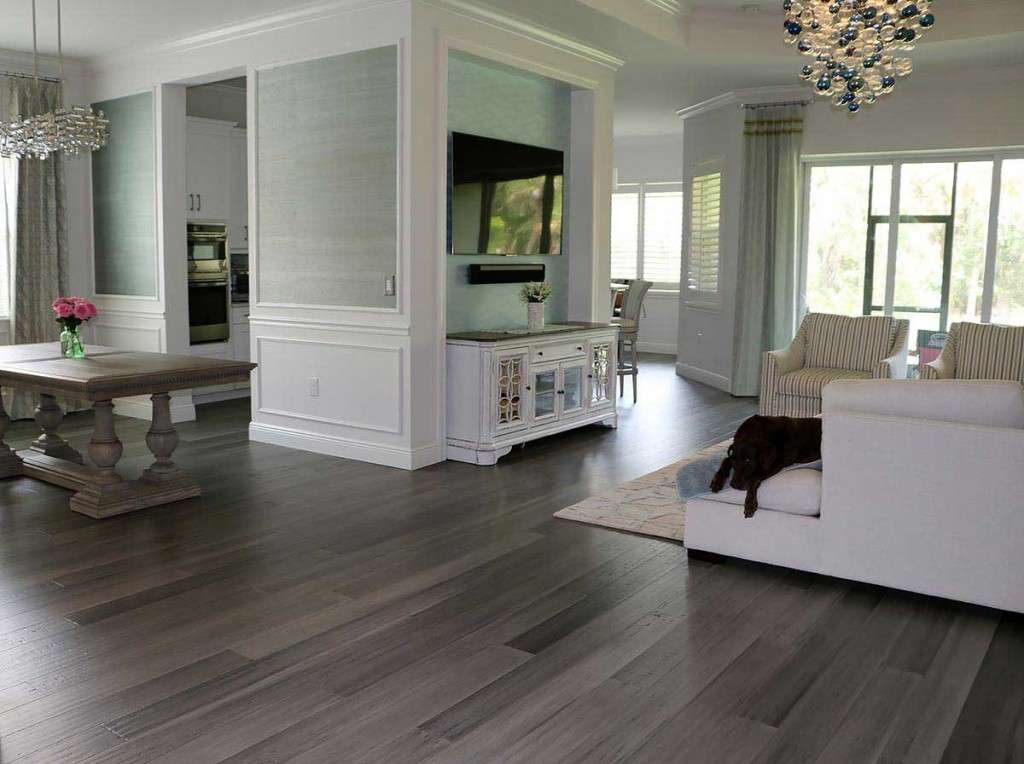
Let’s address the elephant in the room. Bamboo floors are eco-friendly, but they can’t be recycled, reused, or composted at the end of their lives because of the manufacturing processes used to create them. However, the chances are that this won’t matter to you because that bamboo floor is going to last and last and last.
Not only are they long-lasting, but they also help you to live a zero-waste lifestyle in other ways too. Let’s look at just some of the reasons why bamboo floors can be considered zero waste:
- Durable: Bamboo floors score above most hardwoods on the Janka Hardness Scale, with strand is woven bamboo floors being the hardest flooring material around. This means fewer scratches, fewer dents, and less wear and tear, which means less need to repair/refinish/replace them.
- Moisture and Water Resistant: This means that you can use bamboo floors in humid areas of the country (i.e. Florida) and your house (i.e. basements, bathrooms, kitchens) and they’re less likely to be damaged by reasonable levels of moisture or water.
- Can be refinished multiple times: If your bamboo floor does start to wear over the decades, you’ll be glad to know that you can refinish them. It’s much less wasteful to refinish, rather than replace.
- Long-lasting: As you’ve probably gathered from the above points, bamboo flooring lasts a long time. Many retailers will even give you a 25-year warranty, which shows that this isn’t going to be a short-term investment.
- Requires less cleaning: While most people will rejoice at the fact that cleaning bamboo floors will take less time, zero wasters will be thrilled because that means less harsh chemicals and less hard-to-recycle plastic containers. All it needs is a weekly sweep/vacuuming.
Reuse
Sometimes we will find that – despite our best efforts – we have items that we don’t need anymore. It could be television that broke or a water bottle that you bought after forgetting your reusable one, but they’re all surplus to requirements now.
While some of these items could be recycled, the process does take a lot of energy. That’s why it’s so much better to reuse them where possible, so here are my top tips for reusing items.
11. Reuse containers
When shopping at a zero-waste store or the farmers market, they’ll often allow you to refill your old egg cartons, jam jars, and fruit cartons. If you’ve accidentally taken some paper/plastic bags, you can even use them the next time you shop.
12. Repair items
Many broken products from clothes to electronics to furniture can actually be repaired rather than thrown out. If you’re not sure how then you can always ask a wise friend or turn to the internet for advice to fix the items yourself.
If that doesn’t help, you could hire a specialist (i.e. tailor, electrician) or take it to your local repair shop. It’ll save you money and create less waste.
13. Donate what you no longer need
One of the best ways to reduce our waste is to donate things we don’t need, but we have to be careful about how we do it. Many charitable organizations are overrun with goods to sell, but no one is buying them because it’s so cheap to buy new. #SingleUseEconomy!
That’s why it’s often better to donate the goods to organizations that can use them, like domestic abuse shelters or homelessness charities. Often the people using the services were unable to take much when leaving their last home, so you can help someone get back on their feet and live fulfilling lives again, by donating clothes, furniture, or books.
Recycle
This is the part that most people are familiar with, but you may be surprised to learn that you can recycle much more than you think.
14. Make full use of the curbside recycling available to you
While you can’t recycle everything in a weekly recycling collection, it’s certainly the easiest way to do so. Put everything in there that you can because the less effort you have to make, the more likely it is that you’ll stick to it.
15. Look up local recycling points for other items
There are a whole host of items that can be recycled (if they’re not in a good enough condition to be reused) at collection points near you. This includes electronics, textiles, and even oil.
Just type your location and the item you want to recycle into Google (other search engines are available); you’ll be surprised what comes up. They’re often situated in your local supermarket or charity shop.
16. Sign up with TerraCycle
It turns out that just about everything is recyclable, but it may cost you. TerraCycle can recycle almost anything from pens to protein powder packets to plastic packaging, but they do charge you a fee per box.
Rot
At the end of the day, there will still be some items that can’t be reused or recycled, but before you just throw it in the bin, consider whether it can rot down into something useful. The majority of food waste, whether it be vegetable peelings, stale bread, or animal bones, can actually be composted and turned into soil. Let’s look at that.
Although, maybe don’t take it as far as Jesse from The Simpsons in the above clip.
Please note: While meats and bread can be composted, this is a harder process that requires more work. That’s why I recommend using them as animal feed instead.
17. Get a compost bin
One of the best things you can do with your organic materials is to compost them so that they can be turned into fertile soil (or ‘black gold’ as some gardeners call it) capable of creating new plants. It’s great for the planet and stops all of these things from ending up in landfill:
- Uncooked fruit and veg, i.e. peelings, rinds, stones, apple cores, nutshells
- Garden waste i.e. grass clippings, dead leaves, pruned plants
- Animal waste – if it’s in your garden/house anyway and not contaminated by things like kitty litter
- Hair, fur, and feathers
- Nail clippings
- Organic cotton
- Coffee grounds
- Eggshells
- Tea leaves (in the bags, if they’re made from natural materials)
If you have a backyard, then it’s fairly easy to buy a second-hand compost bin and start composting. All you need to do is get a mixture of things that contain carbon (i.e. leaves) and nitrogen (i.e. food scraps) and mix it regularly to help it decompose quickly.
But I don’t have a garden…
Some of us don’t have the luxury of a back garden, so this section will show you how to compost outside of your garden. It will still save plenty of organic material from the trash and, even if you can’t garden yourself, you can always find someone/place to donate the compost too.
18. Get a Wormery
19. Use a Bokashi Bin
20. Sign up for your city’s food waste scheme (if they have one)
21. Take it to the farmer’s market, a green-fingered friend, or a community garden- here are some tips for reducing the smell while saving it up
22. Pocket mulching…maybe
Okay, that about wraps up my blog on making your home zero waste, but now I’d like to hear from you about your experiences with zero-waste. Are you just getting into the lifestyle or are you a seasoned pro? Are you going to put these tips into practice today or have you already tried them and want to share how they went?
Let me know all that and more in the comments section below.



